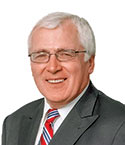Executive Viewpoint: Technology, Technology, Technology
Napoleon Bonaparte once said, “For war, we need three things—money, money and more money.” I believe his quote applies today for our industry: “To prosper, we need three things—technology, technology and more technology.”
Facing the Biden administration’s vendetta against oil, gas and coal-based energy production and the ongoing, politically correct “renewable energy” mystique, relentless searching for technology advancements within the correct segments of the industry could be the most productive way to go.
Three components. There are three vital components governing the discussion: the Biden administration’s record on trying to eliminate the fossil-based energy industry; accurate energy consumption and generation data; and an accurate, fact-based discussion on CO2 emissions/utilization.
The U.S. Energy Information Administration’s (EIA) 2019 Annual Energy Outlook, compared to today’s reality, gives us a reference point to the Biden regime’s achievements in their stated quest. The 2019 EIA report (using the Trump administration’s regulations as base line) forecasted a $3.47/MMBtu natural gas price for 2022 (today: $8.71/MMBtu as per EIA’s June 9, 2022 data); a diesel end-user price of 2.99/gal (today: $5.57/gal), and a gasoline end-user price of $2.64/gal (as of July 19, 2022: $4.80/gal).
The most current (2021) statistics on U.S. primary energy consumption by energy source are reported at 36% petroleum, 32% natural gas, 8% nuclear energy, 11% coal and 12% renewables (EIA). In other words, 87.3% of the total energy consumption is based on sources other than renewables. Of the 12% comprising “renewable sources,” 12% were solar and 27% were wind (EIA), meaning that 39% of the “renewable” energy production is unstable, depending on weather conditions.
CO2 emissions are the third component. While the U.S. decreased its emissions level by 10.5% between 1990 and 2020, China increased its CO2 emissions by 381.5%, and India’s rose 302.7%.
This short list of actual facts provides us with a few conclusions: notwithstanding the Biden administration’s “vision,” fossil fuels as primary energy sources are going to be dominant for decades. The “elimination of these sources isn’t a viable alternative, but their continuous increase of production using clean technologies is.
The growing divergence between “technology need” and “technology development” was clearly on display at the World Petroleum Congress (WPC) during Dec. 5-8, 2021. CEOs of global companies gave us analysis and forecasts for the industry. As it was presented, CAPEX fell from $550 billion pre-Covid, to $318 billion in 2021. Global exploration funding fell from $100 billion (2017) to an estimated $20 billion (2022).
Our industry has been managing itself remarkably well under a hugely disadvantageous set of circumstances created by the Obama and Biden administrations. Our industry has been forced to manage long-term (3-5 years) R&D programs, using short-term planning cycles (3-6 months). This forces companies to spend several times more funds on technology purchasing than development of the same technology.
Another unfortunate result of the Obama/Biden years is a certain level of segregation in our industry: we are heading back to the era when drillers drill, service companies do service, and tool companies manufacture products. It wasn’t long ago, when TxIS received two to three calls a week from, for example, a driller having a problem with a tool, asking TxIS to correct the problem, so the driller will give the new technology to the manufacturer to provide a better tool. As an example, TxIS developed several BOP technologies ordered by a drilling company. In today’s environment, companies with technology vision have a great chance to become industry leaders in specific technology areas. A typical example is Hess Corp., with their advanced technology, foresight and determination.
Funding increases needed. It is evident that CAPEX and R&D funds must be increased to develop the necessary technologies. Also, correct synchronization of R&D programs’ lengths with the appropriate budget planning is fundamental. As one of the most recognized technology providers, TxIS (using its team of 18,000 scientists) has been working on technologies, such as captured CO2’s conversion to a useful substance at the industrial level, a high-efficiency gas separator, and other technologies serving cleaner, more efficient energy production.
The Biden administration’s anti-fossil energy regulations obviously accelerated the trend of decreasing interest in searching for new technologies. Undoubtedly, part of the trend originates in a lack of funding; however, it feels like the roots are deeper. The anti-energy government policies in ten of the last 14 years weakened the foundation that made this industry the best in the world, with its “Can Do” attitude. Existing R&D and engineering companies, such as TxIS, do not have enough capacity to completely fill the gap.
The positive trend, however, is that the industry has been going through a paradigm change from “keep all programs in-house for full-time employees” to “distribute a given objective among specific players and manage the program.” In the long run, it is going to prove to be highly effective. It surely has a far better chance to produce technologies to answer today’s challenges, whether it is clean or renewable energy generation, or CO2 utilization.

- Digital transformation/Late-life optimization: Harnessing data-driven strategies for late-life optimization (March 2024)
- The reserves replacement dilemma: Can intelligent digital technologies fill the supply gap? (March 2024)
- Digital tool kit enhances real-time decision-making to improve drilling efficiency and performance (February 2024)
- Digital transformation: Digital twins help to make the invisible, visible in Indonesia’s energy industry (January 2024)
- Digital transformation: A breakthrough year for digitalization in the offshore sector (January 2024)
- Quantum computing and subsurface prediction (January 2024)
- Applying ultra-deep LWD resistivity technology successfully in a SAGD operation (May 2019)
- Adoption of wireless intelligent completions advances (May 2019)
- Majors double down as takeaway crunch eases (April 2019)
- What’s new in well logging and formation evaluation (April 2019)
- Qualification of a 20,000-psi subsea BOP: A collaborative approach (February 2019)
- ConocoPhillips’ Greg Leveille sees rapid trajectory of technical advancement continuing (February 2019)


